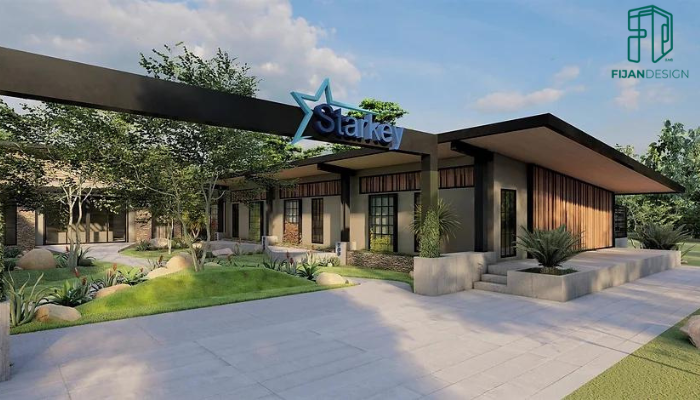
All the steps you need to know from the preliminary project to the construction site
Building a house that matches your dreams can be an operation that requires time and resources, and which is often scary. before embarking on this path it is good to remember that the building process is made up of many phases, involves the participation of multiple subjects, and, very often, also some unforeseen events. Working together with technologists, designers, and other business experts is crucial. Even though those who are not familiar with the building may be intimidated by its complexity, every area can be handled skillfully with the right information and professional supervision. This article addresses the responsibilities of designers, design and execution phases, and bureaucratic procedures in an attempt to condense important factors to take into account while building a home.
Building a house, where to start? The terrain
Deciding to build a house is a significant commitment, requiring both financial investment and patience. Securing suitable land is crucial, whether through ownership or acquisition. In the latter case, involving an architect early on aids in evaluating potential lots. Checking buildability is vital, to ensuring the feasibility of house designs in Zambia. Cadastral verification and possible urban adjustments are essential steps. Understanding the building index, indicating the maximum permitted volume, is key. Each stage demands thorough consideration and professional guidance, paving the way for the realization of this dream home.
The architect’s choice to build a house
When selecting an architect for your House construction in zambia, thorough consideration is essential. Begin by examining past projects, particularly those similar to your envisioned design. The architect’s role is pivotal, translating your ideas into feasible plans while adhering to budget constraints. Assess their ability to guide you from land evaluation to project completion. Personal rapport is crucial; gauge their empathy, confidence, and alignment with your vision. Factor in costs and service offerings to ensure a comprehensive fit. Ultimately, choosing the right professional is integral to realizing your dream home, necessitating a blend of expertise, compatibility, and affordability.
How to build a house: preliminary project and executive project
The first phases of House construction in zambia are the design ones, during which the responsibility is officially entrusted to the chosen professionals, who will begin with the design work of the house.
Preliminary project to build house
Initially, a preliminary project will be carried out, i.e. a first hypothesis for the creation of the general calculation and the cost estimate of the works to be carried out. Thanks to the preliminary project, the client has the opportunity to discuss each choice with the designer, review the definition of the spaces of each environment, and get an idea of which other professionals will be involved, from the construction company to the craftsmen for the finishes. The preliminary project may change for various reasons, such as the need to reduce costs. Once a satisfactory and economically sustainable solution has been reached for the client, the final project will be drafted.
At this point, a qualified technician, who is generally the architect who carried out the projects, produces all the technical documentation to be presented to the Municipality and other interested bodies, to receive all the approvals to proceed with the execution of the works.
Creation of the executive project to build a house
During the implementation of the executive project, meticulous attention will be given to defining materials, systems, and finishing works while carefully assessing construction costs. The project will intricately outline chosen structures and technologies, tailored to whether the House construction in zambia involves reinforced concrete, masonry, or wood. Material selection prioritizes not only cost-effectiveness but also quality, sustainability, and energy efficiency, ensuring a balanced compromise. To avoid short-term savings that could result in future maintenance costs, multiple estimates will be sought when selecting materials and suppliers. This approach ensures that decisions are informed by long-term considerations, safeguarding against potential expenses for repairs and replacements down the line.
Essential Design Imperatives: Seismic Safety and Energy Efficiency
When constructing a house, prioritizing comfort, environmental respect, and safety is paramount. While existing heritage may require retroactive adjustments, new constructions prioritize seismic safety, energy efficiency, and sustainability from inception. A sustainable, efficient home benefits both the environment and occupants, offering long-term savings on maintenance costs. Pursuing sustainability starts with the preliminary project, but it’s in the meticulous selection of every detail that tangible results are realized. Each decision contributes to the overall environmental impact and efficiency of the home, underscoring the importance of thoughtful planning and execution in achieving a truly sustainable dwelling.
What happens when construction begins
In addition to project drafting, securing a competent construction company is crucial for project execution. The contract drafting phase involves specifying the works manager, delivery timelines, penalties for delays, and a detailed specification with unit prices for payment milestones. Often, site clearance precedes construction, clearing obstacles for excavation. The building process starts with foundation excavation, followed by structural elements, insulation, partitions, systems, and fittings. Finishing touches like flooring and plastering occur in the final phase. Throughout House construction in zambia, project technicians assist clients with decisions and unforeseen challenges. Effective collaboration ensures smooth progress and satisfactory completion of the house-building endeavor.